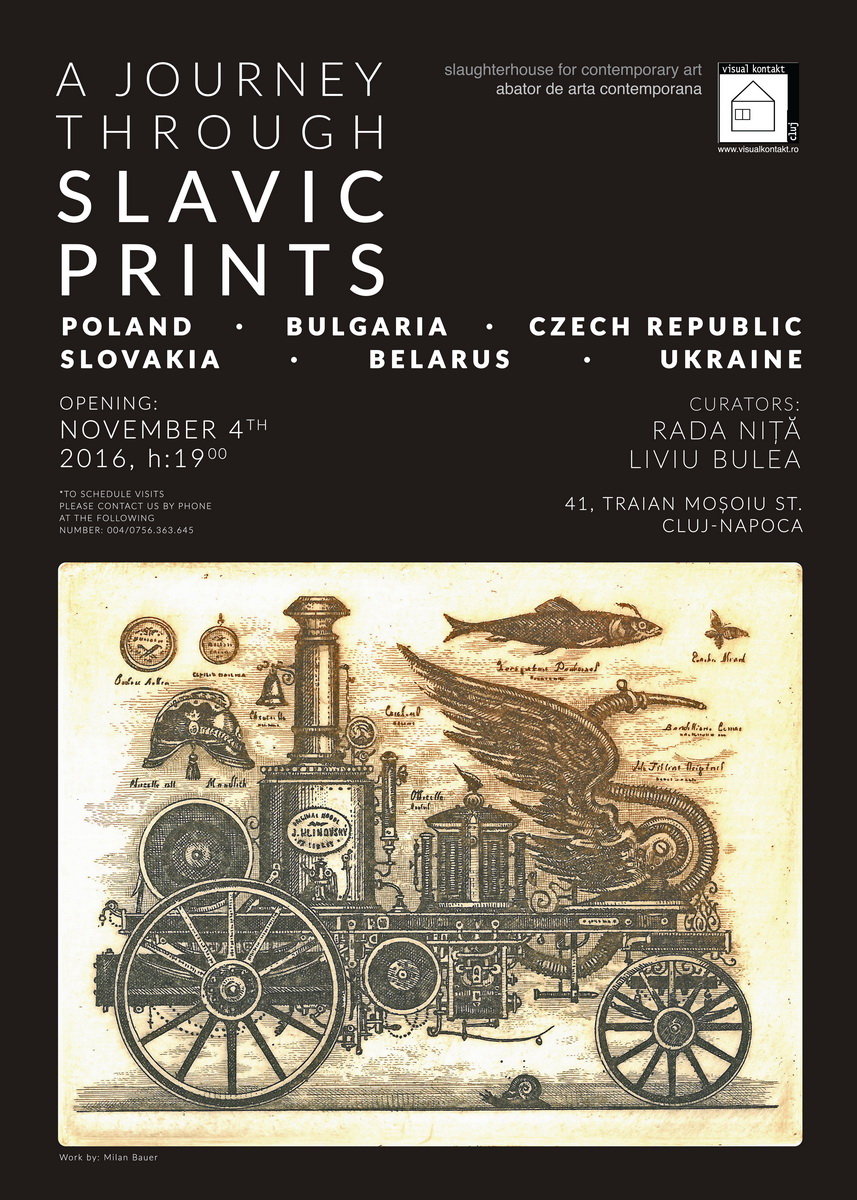The printmaking collection hosted by Visual Kontakt came together during these last few years while working on my PhD thesis entitled ‘The Contemporary Intaglio in Slavic Countries. Hypostases of the Fantastic.’ In its accomplishment, Karel Scherezer, a keen promoter of contemporary printmaking, had an important role. After meeting him in Prague, he became a generous supporter of my research from books regarding the phenomenon (in which he was also involved as an editor), to printmaking works offered as gifts and even putting me in touch with several artists.
In addition, my trips (academic or personal, for longer periods of time or shorter ones) to Poland, Czech Republic, Slovakia and Bulgaria gave me the opportunity to meet artists and collectors, to gain access to a number of studios and to receive more artworks. Besides the pieces that are from my collection, there are a few prints sent by artists particularly for this exhibition, which was initiated by Liviu Bulea from Visual Kontakt.
We selected the works and came up with the concept of the exhibition together. Thus, two rooms are dedicated to ex libris and one contains free graphic works. The exhibited artists (some of them renowned masters, others young talented artists at the beginning of their career) are from Poland, Bulgaria, Czech Republic, Slovakia, Belarus and Ukraine.
Why this art form in particular? Because Slavic contemporary printmaking is truly a phenomenon. Proof of that is this exhibition which presents a fantastic coherent vision, capable of uniting very personal and unique worlds, often filled with humor and poetry. A particular element within this type of printmaking is the interest for the unusual and the bizarre, often accompanied by a narrative note.
The selected artists are not only technically skilled, but in the same time possess a good command of the universal culture, which is freely interpreted and integrated in their artistic worlds. Even though the printmakers use traditional techniques (in the case of this exhibition intaglio and lithography) and are referencing myths, literature and the works of great masters (sometimes through paraphrasing), their works are deeply rooted in contemporaneity. Because of their freedom in concept, the themes they deal with and the humor they resort to, they can only belong to our times.
Even though, in our days, ex libris is drifting away from its original definition and it’s starting to resemble a graphic art independent of the world of books, this exhibition manages to create a dialogue with this initial meaning. Thus, in this case, the books become the support of the ex libris.


